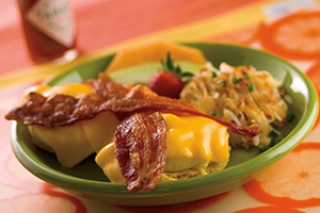50-Minute Classroom: “Those Who Can, Teach; Those Who Can’t, Do.”
Wednesday, 29 April 2015 03:00
 As instructors, we often think we are not doing much. But, says Chef Weiner, we are actually changing the world with every student.
As instructors, we often think we are not doing much. But, says Chef Weiner, we are actually changing the world with every student.
By Adam Weiner, CFSE
In May 2014 I shared a graduation speech for you to give to your students. One year later I think it is time to take a break from my “how to” articles of recent months on ordering, blanching, measuring, etc., and have us all take a moment to realize the impact we have on the world as culinary instructors. This applies to high schools, culinary academies, community colleges and four-year institutions.
Yes, the modern culinary world gravitates out from us. In the previous era, which didn’t end all that long ago, learning on the job or being an apprentice was the norm.
Today, almost everyone gets some form of culinary training before hitting the terra-cotta tiles of a commercial kitchen. We as instructors have a duty to send them out into the world with basic skills, a passion for cooking and, more importantly, knowing how to work. (As I frequently tell people, I don’t teach people how to cook; I teach them how to work in a commercial kitchen.)

 Graduates will not remember many specifics of their educations, and will even realize that so much they thought would be important to their life paths isn’t. But they will remember those who influenced their learning in meaningful ways.
Graduates will not remember many specifics of their educations, and will even realize that so much they thought would be important to their life paths isn’t. But they will remember those who influenced their learning in meaningful ways. Chef Charlie Ayers and other celebrity chefs support Earth Day San Francisco in honor of Earth Month.
Chef Charlie Ayers and other celebrity chefs support Earth Day San Francisco in honor of Earth Month.
 Naturally, educators must stress to their students the critical importance of proper knife skills. But, says this chef-consultant, the reality in the workplace doesn’t always match what we teach. (Don’t miss the YouTube video link.)
Naturally, educators must stress to their students the critical importance of proper knife skills. But, says this chef-consultant, the reality in the workplace doesn’t always match what we teach. (Don’t miss the YouTube video link.)